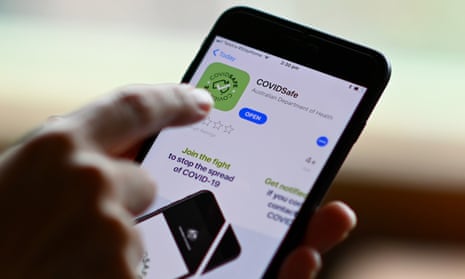Nearly one third of the seven million Australians who downloaded the Covidsafe app have not updated to the most recent version, as new figures show the government spend on the contact tracing app has risen to $14m.
The Covidsafe contact tracing app relies on as many people as possible running it, but new data reveals that more than two million users do not have the most up-to-date version.
In the nine months since the federal government launched the app, it has only identified 17 close contacts that were not found through manual contact tracing methods, all of them in New South Wales.
Part of the reason for the app’s lack of success in identifying contacts could be that almost one third could be using an older version, if they are still using the app. Since April, there have been a dozen software updates pushed out to fix bugs, security flaws, and make the app work more effectively on iPhones when the screen is locked.
The Digital Transformation Agency – which is responsible for the development of the app – told a Senate estimates committee in response to questions on notice that as of the end of October last year, 66% of users had the most up-to-date version, including 63% of iPhone users, and 74% of Android users.
Guardian Australia has asked DTA whether this figure had changed in the past few months. The Covidsafe app routinely sends push notifications telling users to “improve the performance of the app” by opening the app and ensuring the phone is connected to the internet.
Labor’s acting shadow communications minister, Tim Watts, said the government should have been urging people to update the app from the start.
“Instead they rushed the rollout because Scott Morrison wanted an announcement to beat the Apple and Google solutions and refuse to admit they bungled it,” he said.
“Seven million Australians did their bit and downloaded the app, but 2.1 million of them are currently left exposed in the sun because Scott Morrison doesn’t want to look bad politically.”
The agency was also asked in Senate estimates how many of the 7.1 million who downloaded the app initially continued to run it on their phones, but the agency claimed it did not record such information.
“At present, the DTA does not measure active users because, as required under the Privacy Impact Assessment, the DTA does not track information about which users have the app open and running, or where any users are located.”
However, the DTA does get regular analytics and usage data reports, including information on the number of users running the app. Last year DTA refused a freedom of information request from Guardian Australia for this information on the grounds it would compromise public safety. Guardian Australia has appealed the decision.
DTA denied it had misled the Senate, telling Guardian Australia the information provided was correct.
The app has so far cost $7.1m to develop and run, with the largest share of the money going to Amazon which was paid $2.4m for professional services, development and ongoing usage fees. Technology consultants Shine Solutions has received $1.9m, while tech companies Delv earned $1.7m, Cevo $1m, and Boston Consulting Group $800,000.
The department of health also told Senate estimates that it has spent $6.9 m on advertising the app, taking the total cost of the app to $14m.
When the app was launched, prime minister Scott Morrison referred to the app as a form of “sunscreen” necessary to have in place before easing restrictions. However, contact tracing apps have had limited success across the world. Many jurisdictions, including in Australia have adopted QR code venue check-ins as a better way to keep track of where people have been.
Many tech experts have argued that the Australian government should switch to an Apple-Google exposure notification framework to fix issues with Covidsafe, but the government has so far resisted.
Government services minister Stuart Robert said the government was concerned the Apple/Google version would bypass contact tracers, because the app’s default is to alert close contacts directly.
The framework can, however, be modified to allow the contact details of users – with their consent – to be provided to contact tracers in the event they’re identified as a close contact.
The BBC reported earlier this week that only about two in five people in Scotland who tested positive to Covid-19 and had the Protect Scotland app – which uses the Apple/Google exposure notification framework – had chosen to alert their close contacts through the app.
